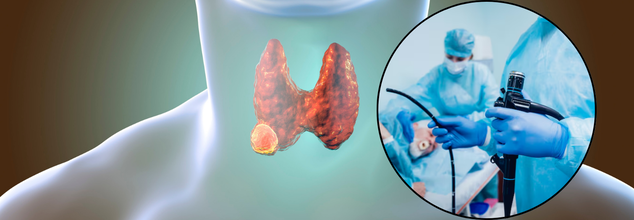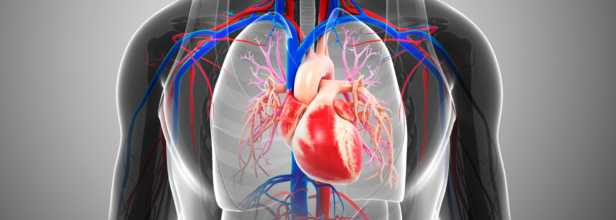- Health Conditions A-Z
- Health & Wellness
- Nutrition
- Fitness
- Health News
- Ayurveda
- Videos
- Medicine A-Z
- Parenting
- Web Stories
Simple Capsule Sponge Test Can Replace Endoscopies And Make Cancer Screening Easier

Credits: Canva
With rates of esophageal cancer having quadrupled since the 1970s and fewer than 20% of patients surviving five years post-diagnosis, early detection is more critical than ever. The capsule sponge test offers a powerful tool for risk stratification, ensuring that high-risk individuals continue receiving endoscopy while sparing low-risk patients from unnecessary invasive procedures.
The gold standard for monitoring patients at risk of esophageal (throat) cancer has been the endoscopy—a procedure that, while effective, is invasive, uncomfortable, and resource-intensive. Now, a simple device known as the “pill-on-a-string” or capsule sponge test is emerging as a transformative alternative, promising to make screening and surveillance for throat cancer faster, less invasive, and more accessible for millions worldwide.
The concept is ingeniously simple: patients swallow a small capsule attached to a string. Once in the stomach, the capsule dissolves, releasing a sponge that expands to about the size of a coin. Healthcare professionals then gently pull the sponge back up by the string, allowing it to collect cells from the lining of the esophagus as it travels upward. The entire procedure takes about ten minutes and can be performed by a nurse in a clinic or even a mobile screening van.
Barrett’s esophagus is a chronic condition in which prolonged acid reflux damages the lining of the esophagus. Over time, the damaged cells can become precancerous, forming dysplasia, and potentially progressing into esophageal adenocarcinoma—a type of throat cancer with notoriously poor survival rates. Despite the relatively low annual conversion rate from Barrett’s to cancer (approximately 0.5%), regular monitoring is essential.
Traditionally, endoscopy has been the go-to method for this surveillance. However, it is not without drawbacks: sedation, fasting, potential complications, and significant cost. This is where the pill-on-a-string method is poised to transform care—making monitoring more accessible, efficient, and patient-friendly.
What Is the Pill-on-a-String Test?
The new test involves swallowing a capsule containing a compressed sponge. Once it reaches the stomach, the capsule dissolves, allowing the sponge to expand. Attached to a string, the sponge is gently pulled back up through the esophagus, collecting cells from the lining along the way. These cells are then analyzed in a lab for red-flag changes indicative of dysplasia or early cancer.
Though the idea may initially sound uncomfortable, the experience has proven to be far more tolerable than an endoscopy. For Duncan Cook, a 57-year-old heating engineer from Cambridge, who has endured nearly two decades of endoscopic monitoring, the change was welcome.
“The first time I had the sponge, I was a bit nervous,” Cook shared in a news release. “It’s quite a big pill to swallow, but it’s much better than going for endoscopies... I was able to have the test done and go right back to work after.”
A major challenge is that symptoms often overlap with benign conditions like heartburn, leading to late diagnoses when treatment options are limited. Early detection is critical: when caught at stage 1, five-year survival rates can reach 63%. This is why regular surveillance of high-risk individuals—particularly those with Barrett’s esophagus—is so important.
In a large multi-center trial involving 910 patients across 13 hospitals in the U.K., researchers from the University of Cambridge and Queen Mary University of London evaluated the effectiveness of the capsule sponge test. Participants—all of whom were already being monitored for Barrett’s esophagus—underwent both the new test and a standard endoscopy for comparison. Findings from the study, recently published in The Lancet, are compelling:
- 54% of patients were classified as low-risk after the sponge test, showing no cellular changes that could indicate progression to cancer.
- Only 0.4% of the low-risk group were later found via endoscopy to have high-risk cell changes.
- No cancers were detected in those flagged as low-risk by the sponge test.
These results suggest that more than half of the patients undergoing routine endoscopies could safely switch to the capsule test without compromising diagnostic accuracy.
“Our findings suggest that the capsule sponge could help stratify patients with Barrett’s esophagus by risk,” said Dr. Peter Sasieni, director of the Cancer Research UK Cancer Prevention Trials Unit. “Given the low risk of progression in these individuals, it should be safe to replace their usual endoscopy with the capsule sponge.”
The research team isn’t stopping here. Scientists are now working to refine the sponge test further by enhancing laboratory analysis of the collected cell samples. Artificial intelligence (AI) is being evaluated to assist in identifying early signs of dysplasia, potentially boosting accuracy and reducing human error.
Professor Rebecca Fitzgerald, director of the Early Cancer Institute at Cambridge, noted, “We need an alternative surveillance method that’s less invasive, easier to administer and more reliable… Endoscopies aren’t always a reliable way of spotting early cancers, and they depend on the skill of the person doing it."
IBS Cases Surged During COVID-19 Pandemic, Study Finds

Credits: Canva
A 2022 study published in journal Frontiers in Medicine notes that there are about 10 to 23% of adults worldwide who suffer from irritable bowel syndrome (IBS). Another 2021 study that delves into the epidemiology of IBS and other bowel disorders of gut-brain interaction accounts for the global distribution of IBS by country in 26 countries that showed a high rate of consistency in prevalence rates. Among them was also the United States. Reflecting on the same data, a latest study published in the journal Neurogastroenterology & Motility notes that rates of IBS have nearly doubled among the US adults. It rose from 6% in May 2020 to about 11% in May 2022.
In the news release, the lead researcher Dr Christopher Almario, a gastroenterologist at Cedars-Sinai Medical Center in Los Angeles said, "Rates of digestive issues such as irritable bowel syndrome and chronic idiopathic constipation rose significantly."
“These findings underscore the significant toll the pandemic has taken on digestive health,” Almario added.
What Does The COVID-19 Pandemic Have To Do With IBS?
“These disorders involve chronic gastrointestinal symptoms that are often triggered or worsened by psychological stress,” Almario said.
It is no news that mental stress in fact increased during the COVID-19 pandemic. A report by the World Health Organization (WHO) indicated a 25% rise in the global prevalence of anxiety and depression in the first year of the pandemic. The National Institutes of Health (NIH) also notes that the pandemic's impact extended to vulnerable populations like adolescents, with increased suicidal ideation linked to infection fears.
Researchers also suggest that the rise in gut health disorders during the pandemic may be linked to both the impact of COVID-19 on the digestive system and the psychological stress caused by social distancing, isolation, and fear of infection.
Another study published in May 2020 in the United European Gastroenterology Journal noted that digestive diseases were amongst the most prevalent health conditions in Europe, as the study's area was focused in that very continent. The study noted: "OVID-19 has various implications on digestive health, as digestive symptoms such as nausea, diarrhoea and cramps occur in COVID-19 positive patients, in some cases, prior to respiratory symptoms. Moreover, people with chronic digestive conditions, including inflammatory bowel disease (IBD), digestive cancers, liver diseases or immunosuppressed liver transplanted patients, could be particularly vulnerable."
The study also noted that COVID-19 has demonstrated notable effects on digestive health. Studies indicate that the virus can impact the gastrointestinal tract and liver, with symptoms such as nausea, diarrhoea, and abdominal cramps. Elevated liver enzymes have been reported in up to 30% of patients.
Viral RNA has been detected in stool samples from 48.1% of patients, including those who tested negative via respiratory swabs. Digestive symptoms were present in 17.6% of cases, with incidence ranging between 5% and 50%. In some patients, gastrointestinal symptoms appeared before respiratory signs and were associated with more severe outcomes. Detection of the virus in stool suggests possible fecal-oral transmission, even from asymptomatic individuals.
Another 2021 study published in the journal Medicine Pharmacy Reports noted, "SARS-CoV-2 can affect major organs including the digestive system." The study reviewed other studies which have been conducted in UK, Wuhan, Hong-Kong, and America and have confirmed that while most common symptoms are fever, cough, and shortness of breath, other symptoms were also nausea, vomiting, abdominal pain, and diarrhea.
How Was The Study Conducted?
Researchers analyzed data from over 160,000 U.S. adults who took part in a national online survey conducted between May 2020 and May 2022. The survey collected information on digestive symptoms, mental health status, and lifestyle changes during the pandemic period.
Among participants diagnosed with irritable bowel syndrome (IBS), the most commonly reported subtype was mixed IBS, characterized by alternating episodes of both diarrhea and constipation.
“This research calls for a renewed focus on gastrointestinal health in the post-pandemic era,” senior researcher Dr. Brennan Spiegel, director of health services research for Cedars-Sinai, said in a news release.
What Are The Common Symptoms And Treatments Available For IBS?
The National Institute of Diabetes and Digestive and Kidney Diseases, US, notes the following as the symptoms of IBS:
- bloating
- the feeling that you haven’t finished a bowel movement
- whitish mucus in your stool
- diarrhea
- constipation
- women on their period will have more symptoms
IBS is typically treated through dietary and lifestyle changes, which are as followed:
- eat more fiber
- avoid gluten
- follow a special eating plan called the low FODMAP diet
- increasing your physical activity
- reducing stressful life situations as much as possible
- getting enough sleep
1970 To 2020 Notes For A Major Decline In Heart Disease Deaths In US

Credits: Canva
In a comprehensive study spanning more than five decades, researchers have found that overall deaths due to heart disease in the United States have significantly declined since 1970.
However, the study also points to a concerning rise in mortality from specific non-ischemic heart conditions such as heart failure, hypertensive heart disease, and arrhythmias.
Published online on June 25 in the Journal of the American Heart Association, the research highlights both the gains made in managing ischemic heart disease and the urgent need to address other forms of cardiovascular illness.
66% Drop in Overall Heart Disease Mortality
The study, led by Dr. Sara J. King of Stanford University School of Medicine, analyzed data from the Centers for Disease Control and Prevention's (CDC) National Vital Statistics System. It focused on U.S. adults aged 25 and older, tracking age-adjusted heart disease mortality rates from 1970 through 2022.
The findings are significant: overall heart disease mortality dropped by 66 percent—from 761 deaths per 100,000 people in 1970 to 258 per 100,000 in 2022. This decline is largely attributed to advances in the treatment and prevention of ischemic heart disease, especially acute myocardial infarctions, commonly known as heart attacks.
The proportion of heart disease deaths attributed to ischemic heart disease also declined sharply. In 1970, ischemic conditions accounted for 91 percent of all heart disease deaths. By 2022, that number had dropped to 53 percent.
Sharp Decline in Heart Attack-Related Deaths
One of the most notable findings was the 89 percent decline in deaths due to acute myocardial infarction.
Mortality from all ischemic heart diseases decreased by 81 percent. These improvements have been credited to better public awareness, improved emergency response systems, lifestyle changes, and the development of more effective medications and medical procedures.
“This evolution over the past 50 years reflects incredible successes in the way heart attacks and other types of ischemic heart disease are managed,” said Dr. King in a statement released with the study.
Rise in Non-Ischemic Heart Conditions
However, not all trends pointed in a positive direction. The same period saw a significant increase—81 percent—in mortality from non-ischemic forms of heart disease. Most notably, the death rate from arrhythmias rose by 450 percent, while hypertensive heart disease and heart failure saw increases of 106 and 146 percent, respectively.
These figures suggest that while the fight against ischemic heart disease has made great strides, the growing burden of other cardiac conditions may require new strategies and interventions.
“The substantial increase in deaths from other types of heart conditions, including heart failure and arrhythmias, poses emerging challenges the medical community must address,” said Dr. King.
Note: The authors of the study acknowledged financial ties to the pharmaceutical industry, a standard disclosure in research of this nature.
Scientists Detect Early Signs of Cancer In Patient Blood Years Before Diagnosis; Will It Prevent Early-Onset Cancers?

Credits: Canva
The vision of a world where cancer could be detected and treated before it ever causes symptoms—where a simple blood test could reveal the earliest whispers of disease, years before a diagnosis would otherwise be made. It is rapidly moving closer to reality, thanks to pioneering research from U.S. scientists who have demonstrated that blood biomarkers can reveal the presence of cancer more than three years before traditional diagnosis.
Spotting cancer early is one of the most powerful ways to improve survival rates. Tumors caught in their infancy are far more likely to be curable, and treatments can be less aggressive, with fewer side effects. The latest findings, published in Cancer Discovery, suggest that we are on the brink of a new era in cancer screening—one powered by advanced blood tests that can catch cancer in its earliest, most treatable stages.
How Can Blood Reveal the Unseen Caner?
The key to this study lies in circulating tumor DNA, or ctDNA—tiny fragments of genetic material that break off from cancerous cells and float through the bloodstream. Though rare and extremely difficult to detect at low concentrations, these fragments can carry tumor-specific mutations that act as red flags for early cancer development.
Led by oncology researcher Yuxuan Wang and a team at Johns Hopkins University, the study analyzed blood samples from 26 individuals who were later diagnosed with cancer within six months. These were compared with blood samples from 26 cancer-free individuals from the same health study cohort.
Using a combination of sophisticated algorithms and a multi-layered validation system, researchers were able to identify ctDNA signatures associated with cancer in eight of the 26 patients—nearly 31% of those who eventually received a diagnosis. Remarkably, blood samples taken more than three years earlier were available for six of those eight individuals, and in four of those cases, tumor DNA was already present—albeit at levels up to 80 times lower than those detected closer to diagnosis.
Why Is 3 Year A 'Big' Window?
What makes this research truly remarkable is the ability to detect cancer up to three years before clinical diagnosis. For six of the eight positive cases, the researchers had access to even older blood samples—taken 3.1 to 3.5 years before the cancer was diagnosed. In four of these six cases, the same tumor DNA fragments were already present, albeit at levels up to 80 times lower than those detected by the MCED test closer to diagnosis.
This three-year window could be transformative. “Three years earlier provides time for intervention,” explains Wang. “The tumors are likely to be much less advanced and more likely to be curable.” Early detection means more options for patients, less invasive treatments, and a better chance at long-term survival.
Despite these promising findings, there are limitations that need to be addressed before such testing becomes mainstream. The lower the ctDNA levels, the harder they are to detect reliably. Achieving the necessary sensitivity for detecting such minuscule concentrations remains a significant hurdle.
“This study shows the promise of MCED (multi-cancer early detection) tests in detecting cancers very early, and sets the benchmark sensitivities required for their success,” said Dr. Bert Vogelstein, an oncology researcher at the Ludwig Center at Johns Hopkins.
How The Test Impact Future Cancer Treatments?
This research is part of a global movement toward liquid biopsies—blood tests that can detect cancer, monitor its progression, and even guide treatment decisions. Scientists around the world are racing to develop tests that can spot multiple types of cancer from a single blood sample, with some already in clinical trials.
The potential impact is enormous. Early detection could dramatically increase survival rates for many cancers, including those that are often caught late, such as pancreatic, ovarian, and lung cancers. It could also reduce the need for invasive diagnostic procedures and make screening more accessible to people everywhere.
If refined and rolled out at scale, blood-based MCED tests could revolutionize cancer screening programs. Current methods, such as mammograms, colonoscopies, and pap smears, are specific to certain types of cancer and often detect issues only after symptoms emerge. A single blood test capable of catching multiple cancers before they manifest could dramatically improve early intervention strategies.
Can Early Detection Prevent Early-Onset Cancers?
Current evidence indicates that early detection and screening can significantly improve cancer survival rates and reduce the need for aggressive treatments, especially for cancers like breast and colorectal cancer when caught early. However, early detection does not prevent the initial development of early-onset cancers—it enables clinicians to identify cancers or pre-cancerous changes at a stage when treatment is more likely to be successful and less invasive.
Researchers say that detecting these cancers before they reach advanced stages could open new doors for targeted prevention strategies, especially for people with a family history of cancer or genetic predispositions. “If early-onset cancers can be caught even before the first symptoms appear, we not only improve survival but also preserve quality of life,” said Dr. Wang.
However, experts caution that while early detection is a critical first step, it must be paired with timely follow-up and interventions tailored to the unique biology of early-onset cancers. Continued research into how these cancers evolve at the genetic and epigenetic levels will be key to refining detection methods and crafting personalized treatment paths.
Prevention strategies—such as lifestyle changes, vaccination, and minimizing risk factors—are essential for reducing the risk of developing cancer in the first place. Early detection, through methods like screening and advanced blood tests, is focused on finding cancer at its most treatable stage, not on preventing its onset. For rapidly growing or aggressive cancers, early detection may still face limitations, as some tumors can develop and spread between screening intervals.
Early detection technologies are powerful tools for improving outcomes and survival but do not prevent early-onset cancers from occurring.
© 2024 Bennett, Coleman & Company Limited

